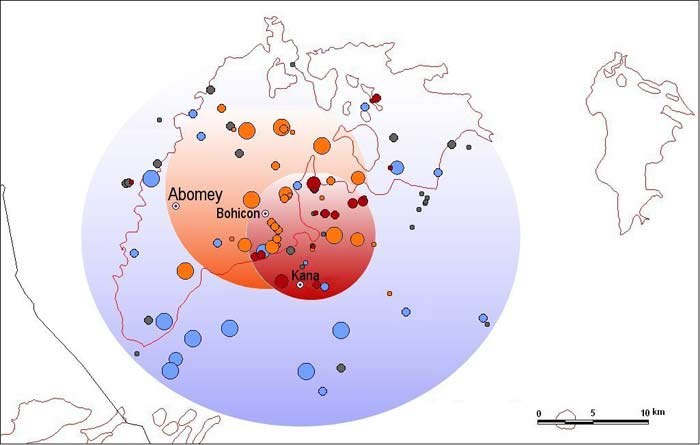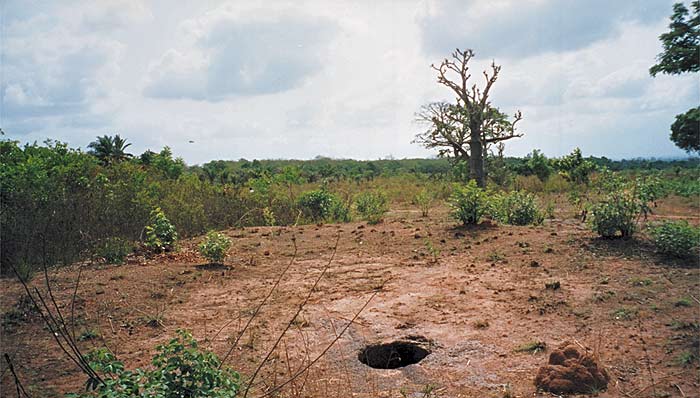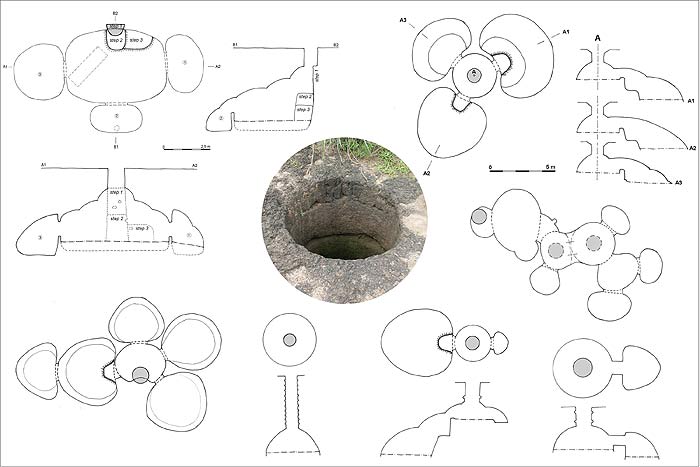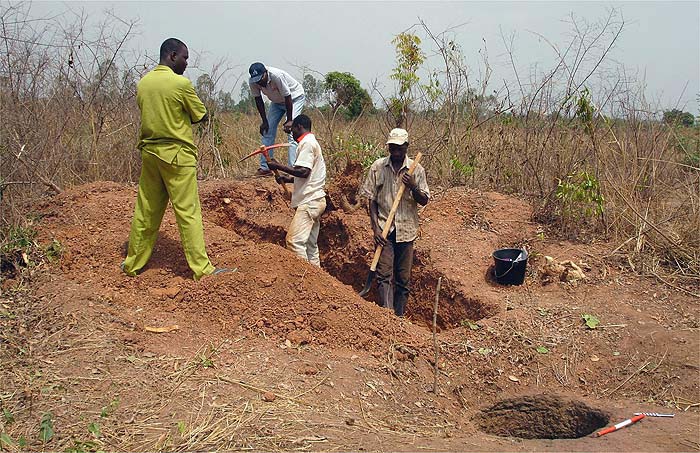CAVES
More than 1600 fine man-made “sous-terrains”, or caves, have been recorded from the Dahomean homelands around Abomey and Bohicon, including the group at Agonguinto (the museum). No doubt this is only a few percentages of the total number. Some caves are found alone, others in small and larger groups; the larges group hold more than 100 caves. Interestingly, the caves have never been found near the Royal Palace estate centres.
The caves are dug into the hard laterite clay soil and have vertical and rather narrow entrances opening into one or more rooms. They are of three types, which follow each other in time:
(1) The oldest type is beautiful and complex, with many rooms, yet easy to enter.
(2) The next type, represented at the museum at Agonguinto, has a longer entrance and side-chambers descending from a main chamber.
(3) The latest type has a long vertical entrance and only one room.
The caves only vary slightly in distribution, the earliest concentrating around Kana, to the southeast of Abomey, the latest having the widest distribution. The dates of the caves cover the period late 17-early 19th century. They are thus contemporary with the Dahomean kingdom.

Map of distribution of various types of caves.
The Dahomean population is in agreement that the caves belong “to the time of the wars” and/or that they have been “used to collect drinking water”. Both statements are likely true. The water from the caves is still being enjoyed when working in the fields. A use as burials (or even voudouns) is unlikely.The early caves - called Type Kana - have the character of individual underground storages or bunkers. The next type - Type Agonguinto, of the mid-18th century - follows a somewhat stricter pattern. It cannot be ruled out that the deeper champers have been dug with the idea of collecting water in mind. The late flask-like caves of Type Didonou - of the early 19th century - seem primarily to have been constructed for water. But all can be used for storage hiding. In Fon-gbe language, a cave used for hiding is called “Bedo”, one for collecting water “Doto”; a cave used in wars is “Ahuando”.

Cave landscape at Saklo.
Certainly, the old tale of the whole Dahomean army disappearing in front of Nigerian attackers from Oyo, only later to reappear behind enemy forces, may well be true: The Dahomean soldiers obviously taking refuge in the caves! The caves hold no archaeological find, since they were constantly cleaned through the ages. Only under the dirt dug from the cave, on the old surface, can one hope to find dating material, including potsherds, old smoking-pipes and charcoal for scientific dates.

Types of caves.

Cave at Adovi.

Cave at Kana.

Cave colline excavation in Kana.
